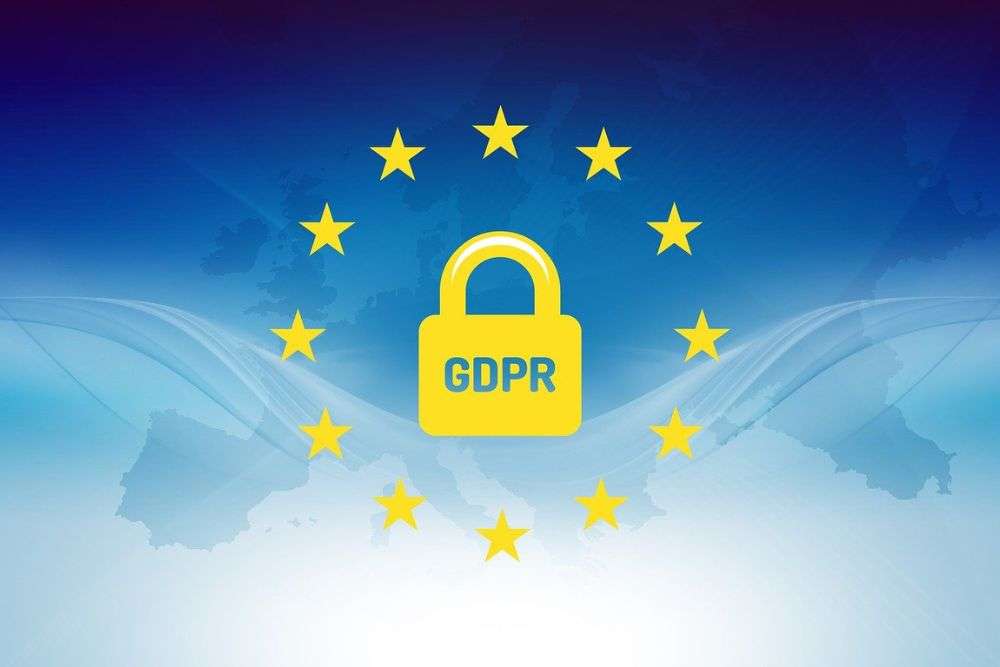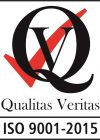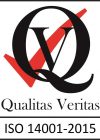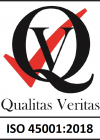Writing a LinkedIn cover letter is an essential part of any job application process. It serves as your first introduction to potential employers and offers a valuable opportunity to showcase your qualifications, skills, and enthusiasm for the position. In order to make a lasting impression and stand out from the competition, it is crucial to craft a cover letter that grabs the reader’s attention right from the start. This article provides valuable tips and guidelines to help you create a compelling cover letter that will make employers take notice.
Understanding the Importance of a LinkedIn Cover Letter
A LinkedIn cover letter holds immense significance in the job application process. It serves as a powerful tool to enhance your overall application and make a lasting impression on potential employers. Let’s explore two key aspects that highlight the importance of a LinkedIn cover letter: enhancing your job application and showcasing your written communication skills.
1.Enhancing Your Job Application
When you apply for a job on LinkedIn, your profile and resume provide essential information about your qualifications, work experience, and education. However, a cover letter adds depth and context to your application, allowing you to highlight specific aspects that may not be fully captured in your resume alone.
A well-crafted LinkedIn cover letter demonstrates your genuine interest in the position and the company. It enables you to showcase your enthusiasm, passion, and motivation to contribute to the organization’s success. By tailoring your cover letter to align with the job requirements and the company’s goals, you convey that you have taken the time to understand the role and how you can add value.
2.Showcasing Your Written Communication Skills
Effective written communication skills are highly valued by employers. A LinkedIn cover letter serves as a platform to exhibit your ability to articulate your thoughts, express ideas concisely, and communicate persuasively. It allows you to demonstrate your command over the English language and your attention to detail in crafting a well-structured and error-free letter.
Through your cover letter, you can showcase your writing style, professionalism, and clarity of expression. A compelling and engaging letter captures the reader’s attention from the beginning and maintains their interest throughout. It provides an opportunity to convey your personality, professionalism, and unique selling points that set you apart from other candidates.
Researching the Company and Position
Thorough research on the company and position you are applying for is an essential step in creating a compelling LinkedIn cover letter. Let’s explore the different aspects of researching the company and position, and how it influences the crafting of an engaging opening.
1.Crafting an Engaging Opening
The opening of your LinkedIn cover letter sets the tone for the rest of the document and plays a significant role in capturing the reader’s attention. To create an engaging opening, you need to incorporate elements that resonate with the company’s values, mission, and goals. This is where your research becomes invaluable.
2.Using Anecdotes or Stories
One effective way to grab the reader’s attention is by using anecdotes or stories that relate to the company or position. These personal narratives provide a human touch to your cover letter and help establish a connection between you and the reader. By sharing an experience or situation that highlights your skills or passion, you engage the reader and demonstrate your relevance to the role.
For example, if you’re applying for a marketing position at a tech startup, you might share a brief anecdote about a successful campaign you spearheaded that led to significant user growth. This not only showcases your expertise but also aligns your past accomplishments with the company’s marketing objectives.
3.Asking Thought-Provoking Questions
Another approach to crafting an engaging opening is to pose thought-provoking questions that stimulate the reader’s curiosity. These questions should be tailored to the specific industry, company, or position you’re applying for. They should demonstrate your understanding of the challenges or opportunities faced by the organization and showcase your ability to think critically.
For instance, if you’re applying for a project management role at a construction company, you might ask, “How does XYZ Construction ensure seamless coordination between different teams to deliver projects on time and within budget?” This question not only shows your interest in the company’s processes but also prompts the reader to consider your suitability for the role.
4.Sharing Relevant Statistics
Statistics are a powerful way to capture attention and provide credibility to your cover letter. When conducting your research, look for relevant industry or company-specific statistics that showcase your knowledge and understanding of the market. Incorporating these statistics into your opening can make a strong impact and demonstrate your preparedness.
For example, if you’re applying for a sales position at a software company, you could begin your cover letter by stating, “Did you know that 70% of businesses in the software industry reported a 20% increase in revenue after implementing our product? As a sales professional, I am thrilled at the opportunity to contribute to your company’s growth in this dynamic market.”
Want to Learn how a LinkedIn Cover Letter can land you a Job? You can check it out here.
Highlighting Relevant Skills and Experiences
Effectively highlighting your relevant skills and experiences is crucial in crafting a compelling LinkedIn cover letter. Let’s delve into the key aspects of this section, including aligning with job requirements, using specific examples and achievements, and quantifying impact and results.

1.Aligning with Job Requirements
To make your cover letter stand out, it’s essential to align your skills and experiences with the specific job requirements mentioned in the job posting. Carefully review the job description and identify the key skills, qualifications, and attributes that the employer is seeking. Then, strategically incorporate these elements into your cover letter to demonstrate your suitability for the role.
For instance, if the job posting emphasizes the need for strong project management skills, you can highlight your expertise in this area by mentioning relevant projects you have successfully managed or certifications you have obtained. Aligning your skills with the job requirements showcases your ability to fulfill the employer’s needs effectively.
2.Using Specific Examples and Achievements
Generic statements about your skills and experiences are less impactful than specific examples and achievements. Use your LinkedIn cover letter as an opportunity to showcase your accomplishments in previous roles and how they directly relate to the position you’re applying for.
For example, instead of simply stating that you have excellent communication skills, you can provide a specific example: “In my previous role as a marketing coordinator, I successfully executed a social media campaign that resulted in a 30% increase in engagement and a 20% rise in website traffic.”
By using specific examples, you demonstrate your ability to apply your skills in practical situations and provide tangible evidence of your capabilities.
3.Quantifying Impact and Results
To further strengthen your cover letter, quantify the impact and results of your past experiences whenever possible. Numbers and metrics add credibility to your achievements and help the reader understand the scope of your contributions.
For instance, rather than stating that you increased sales during your tenure as a sales representative, you could specify: “I consistently exceeded monthly sales targets, achieving an average of 20% revenue growth year over year.”
Demonstrating Cultural Fit
Demonstrating cultural fit in your LinkedIn cover letter is crucial as it showcases your compatibility with the company’s values, mission, and overall work culture. Let’s explore two key aspects of demonstrating cultural fit: understanding company values and culture, and highlighting shared values and beliefs.
1.Understanding Company Values and Culture
Before crafting your cover letter, take the time to thoroughly research and understand the values and culture of the company you’re applying to. This understanding allows you to align your own values and work style with those of the organization.
By delving into the company’s website, social media platforms, and other resources, you can gain insights into their core principles, mission statement, and employee testimonials. Look for information about their work environment, team dynamics, and any specific initiatives or programs they prioritize. This research will provide you with a solid foundation to demonstrate your knowledge and genuine interest in the company.
2.Highlighting Shared Values and Beliefs
Once you have a clear understanding of the company’s values and culture, it’s time to emphasize the shared values and beliefs you possess. Highlighting these shared aspects in your LinkedIn cover letter allows you to convey your fit within the organization and establish a connection with the reader.
For example, if the company emphasizes collaboration and innovation, you could mention a project where you collaborated with a diverse team to develop a creative solution that delivered exceptional results. This demonstrates your ability to thrive in a collaborative environment and aligns with the company’s values.
Personalizing the Letter
Personalizing your LinkedIn cover letter is a crucial step in making a memorable impression on the hiring manager or recruiter. Let’s explore two key aspects of personalizing the letter: addressing the hiring manager or recruiter directly and researching the company’s background.
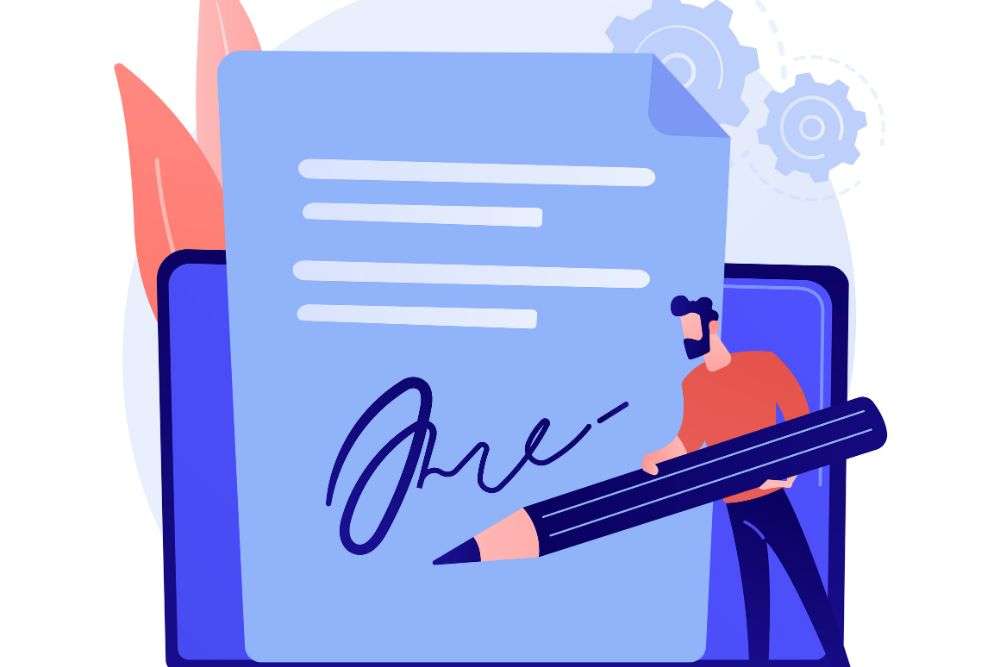
1. Addressing the Hiring Manager or Recruiter
Addressing the hiring manager or recruiter by their name adds a personal touch to your cover letter and shows that you have taken the time to research and understand the recipient. Whenever possible, try to find the name of the person responsible for reviewing applications.
2.Researching the Company’s Background
To further personalize your LinkedIn cover letter, conduct thorough research on the company’s background. Look for recent news articles, press releases, and updates on their website or social media platforms. This research will provide you with valuable insights about the company’s recent achievements, projects, or initiatives.
Using Clear and Concise Language
Using clear and concise language in your LinkedIn cover letter is vital to effectively communicate your qualifications and make a strong impression. Let’s explore why clear and concise language is important and how you can implement it in your cover letter.
Clear and concise language ensures that your message is easily understood by the reader. It eliminates ambiguity and reduces the risk of misinterpretation. Here are some key points to consider:
1.Eliminate Unnecessary Jargon and Technical Terms
While it’s important to showcase your industry knowledge and expertise, it’s equally crucial to avoid overwhelming the reader with excessive jargon and technical terms. Use language that is accessible and understandable to a broader audience, including individuals who may not have the same level of specialized knowledge.
Consider the level of familiarity the hiring manager or recruiter may have with industry-specific terms and concepts. If you do use technical terms, provide brief explanations or context to ensure clarity.
2.Use Active Voice and Strong Verbs
Using active voice and strong verbs helps to convey your ideas in a more direct and engaging manner. Active voice emphasizes the subject performing the action, making your sentences more concise and impactful.
For example, instead of saying, “My skills were utilized in managing a team,” you can write, “I successfully managed a team using my skills.” This revised sentence is clearer, more direct, and highlights your active involvement.
3.Organize Information in a Logical Structure
Presenting information in a logical and organized manner helps the reader navigate your cover letter more effectively. Use paragraphs and bullet points to break down your content into digestible sections.
Start with a strong introduction that captures attention, followed by body paragraphs that highlight your relevant skills, experiences, and achievements. Use headings and subheadings to guide the reader through different sections and to create a visual hierarchy.
Within each section, maintain a concise writing style. Keep sentences focused and avoid unnecessary repetition or tangents. Use transition words and phrases to create smooth connections between ideas and paragraphs.
4.Proofread and Edit for Clarity
After writing your cover letter, take the time to proofread and edit it for clarity and conciseness. Look for any confusing or convoluted sentences and simplify them. Ensure that your language flows smoothly and that your points are clearly articulated.
Remove any redundant or repetitive information. Be mindful of wordiness and strive for brevity without sacrificing the key details that support your qualifications.
Showcasing Achievements and Results
Showcasing your achievements and results in your LinkedIn cover letter is crucial for demonstrating your value and making a strong impression on the reader. Let’s explore two key aspects of showcasing achievements and results: highlighting past successes and quantifying accomplishments.
1.Highlighting Past Successes
Highlighting your past successes is an effective way to demonstrate your capabilities and show how you can bring value to the prospective employer. Instead of simply listing your job responsibilities, focus on specific achievements or accomplishments that set you apart from other candidates.
Consider the challenges you faced in previous roles and how you successfully overcame them. Did you exceed sales targets, streamline processes to increase efficiency, or lead a successful project? These examples of past successes can highlight your ability to deliver tangible results.
For example, instead of saying, “I managed a team of sales representatives,” you could say, “Under my leadership, the sales team consistently exceeded monthly targets, resulting in a 20% increase in revenue within six months.”
By highlighting specific successes, you provide evidence of your skills and demonstrate your potential to achieve similar outcomes in the role you are applying for.
2.Quantifying Accomplishments
Quantifying your accomplishments adds credibility and impact to your LinkedIn cover letter. Numbers and metrics provide concrete evidence of your achievements and help the reader understand the scope and magnitude of your contributions.
When quantifying accomplishments, consider the following:
- Revenue: Specify the amount of revenue generated, percentage growth, or cost savings achieved.
- Performance: Highlight improvements in productivity, efficiency, or customer satisfaction rates.
- Time: Mention time saved, deadlines met, or project completion ahead of schedule.
- Reach: Discuss the number of clients served, projects completed, or campaigns launched.
For example, instead of saying, “I implemented a new marketing strategy,” you could say, “I successfully implemented a new marketing strategy that led to a 40% increase in website traffic and a 15% boost in lead conversions within three months.”
By quantifying your accomplishments, you provide tangible evidence of your abilities and differentiate yourself from other candidates who may provide generic statements without supporting data.
Including Keywords for SEO Optimization
Including relevant keywords in your LinkedIn cover letter is essential for optimizing your content for search engine visibility and increasing the chances of your profile being discovered by recruiters or hiring managers. Let’s explore how to strategically incorporate keywords for SEO optimization in your cover letter.
1.Research Relevant Keywords
Start by conducting keyword research to identify the most relevant terms and phrases related to your industry, role, and skills. Use keyword research tools, industry-specific websites, and job descriptions to gather a comprehensive list of keywords.
Consider both general keywords and long-tail keywords. General keywords are broader terms that encompass the overall theme of your cover letter, while long-tail keywords are more specific phrases that target niche areas or specialized skills.
For example, if you’re applying for a marketing role, general keywords could include “marketing strategies” or “digital marketing,” while long-tail keywords could be “social media advertising” or “content marketing campaigns.”
2.Strategic Placement of Keywords
Once you have identified relevant keywords, strategically place them throughout your cover letter. Aim for a natural and seamless integration of keywords without compromising the overall readability and flow of your content.
Incorporate keywords in the following areas:
- Introduction: Include a keyword or two in the opening paragraph to provide context and relevance to your cover letter.
- Skills and Experience: Use keywords to highlight your relevant skills, experiences, and achievements. For example, if “project management” is a relevant keyword, incorporate it when discussing your experience leading successful projects.
- Qualifications and Job Requirements: If the job posting lists specific qualifications or requirements, try to include relevant keywords from those lists to demonstrate your suitability for the role.
- Conclusion: Consider incorporating a keyword or two in your closing statement to reinforce your expertise and align with the overall theme of your cover letter.
3.Avoid Keyword Stuffing
While it’s important to include keywords, avoid keyword stuffing, which refers to excessively and unnaturally overloading your content with keywords. Keyword stuffing can negatively impact the readability and credibility of your cover letter.
Focus on providing valuable content that effectively communicates your qualifications and experiences. Use keywords strategically and sparingly, ensuring they are seamlessly integrated into the narrative of your cover letter.
4.Customize for Each Application
Tailor your cover letter and keywords for each specific job application. Carefully review the job description and company’s requirements to identify any keywords or phrases that are particularly relevant to that role.
Customizing your cover letter with targeted keywords demonstrates your attention to detail and genuine interest in the specific position, increasing the chances of your cover letter resonating with the reader.
Learn more on How to Optimize your LinkedIn Profile for Better Visibility Here.
Formatting and Structure
The formatting and structure of your LinkedIn cover letter play a significant role in ensuring readability, organization, and overall effectiveness. Let’s explore two key aspects of formatting and structure: using headings and subheadings, and organizing information with bullet points or numbered lists.
1.Using Headings and Subheadings
Incorporating headings and subheadings in your cover letter helps create a clear and logical structure, making it easier for the reader to navigate and absorb the information. Headings and subheadings also add visual appeal and break up large blocks of text, enhancing readability. Here’s how you can effectively use headings and subheadings:
- Use H1 (Heading 1) for your cover letter’s main title, typically placed at the top of the document. The H1 heading should be bold and catchy, grabbing the reader’s attention.
- Utilize H2 (Heading 2) for major sections or main topics within your cover letter. For example, you might have sections titled “Introduction,” “Skills and Experience,” “Personalized Approach,” and “Conclusion.”
- Implement H3 (Heading 3) for subtopics or subsections within each major section. These subheadings provide further organization and help the reader quickly find specific information. For instance, within the “Skills and Experience” section, you could have H3 headings such as “Technical Skills” or “Leadership Experience.”
- If necessary, you can further structure your content with H4 (Heading 4) for additional subheadings or sub-subsections. However, ensure that the hierarchy remains clear and the headings do not become overwhelming or excessive.
By incorporating headings and subheadings, you create a visually appealing and well-organized cover letter that guides the reader through your content with ease.
2.Organizing Information with Bullet Points or Numbered Lists
Bullet points or numbered lists are effective tools for organizing information in a concise and structured manner. They help to emphasize key points, enhance readability, and make important information stand out. Here’s how you can utilize bullet points or numbered lists effectively:
- Use bullet points to present a list of skills, accomplishments, or qualifications. For example, you can list your top three skills or highlight key achievements in a bulleted format.
- Numbered lists are useful when presenting steps, processes, or chronological information. If you want to outline your approach to problem-solving or describe a project you managed, using numbered lists can provide a clear and easy-to-follow structure.
- Keep each bullet point or list item brief and focused, ideally consisting of a single sentence or phrase. This helps maintain clarity and readability.
- If necessary, you can further expand on each bullet point or list items with supporting sentences. However, strive to keep the main points concise to maintain the efficiency and impact of the formatting.
By incorporating bullet points or numbered lists strategically, you break down complex information into digestible chunks and create a visually appealing cover letter that engages the reader.
Proofreading and Editing
Proofreading and editing are critical steps in the writing process that ensure your LinkedIn cover letter is polished, error-free, and effectively communicates your message. Let’s explore the importance of proofreading and editing, as well as some key strategies for achieving a refined final draft.
1.Importance of Proofreading and Editing
Proofreading and editing help eliminate errors, improve clarity, and enhance the overall quality of your cover letter. Here are some reasons why proofreading and editing are essential:
- Error Correction: Proofreading allows you to identify and correct spelling mistakes, grammatical errors, punctuation errors, and typos. These errors can undermine the professionalism and credibility of your cover letter, so it’s crucial to eliminate them.
- Clarity and Coherence: Editing helps you refine your language and sentence structure, ensuring your ideas are expressed clearly and coherently. It enables you to identify awkward phrasing, ambiguous statements, or convoluted sentences that may confuse the reader.
- Consistency and Tone: Proofreading and editing allow you to maintain consistency in your writing style and tone throughout the cover letter. This consistency helps create a cohesive and professional impression.
- Content Enhancement: During the editing process, you can assess the effectiveness of your content and make improvements. You can refine your arguments, rephrase sentences for stronger impact, and ensure that your ideas flow logically and smoothly.
2.Key Strategies for Proofreading and Editing
To effectively proofread and edit your LinkedIn cover letter, consider the following strategies:
- Take a Break: After completing the initial draft, step away from your cover letter for a while. This break helps you approach the proofreading process with fresh eyes, making it easier to spot errors and inconsistencies.
- Read Aloud: Read your cover letter aloud to catch any awkward phrasing, repetitive words, or unclear sentences. Hearing the text can help identify issues that may not be apparent when reading silently.
- Focus on One Aspect at a Time: During proofreading, concentrate on specific elements such as spelling, grammar, punctuation, or formatting. This focused approach helps ensure that you thoroughly review each aspect of your cover letter.
- Use Tools and Resources: Utilize spelling and grammar checkers, such as grammarly.com or spellcheckplus.com, to identify potential errors. However, rely on these tools as aids rather than solely depending on them.
- Seek Feedback: Consider asking a trusted friend, family member, or colleague to review your cover letter. Fresh perspectives can reveal areas that require improvement or provide suggestions for enhancing clarity.
- Proofread in Multiple Passes: Conduct multiple proofreading passes, each with a specific focus. For example, in one pass, solely check for spelling errors, while in another, focus on sentence structure and clarity. This systematic approach helps ensure a comprehensive review.
Utilizing Call-to-Action Statements
Incorporating call-to-action (CTA) statements in your LinkedIn cover letter is a powerful way to prompt the reader to take the desired action, whether it’s scheduling an interview, reviewing your profile, or contacting you for further discussion. Let’s explore the importance of utilizing CTA statements and how to effectively incorporate them into your cover letter.
1.Importance of Call-to-Action Statements
CTA statements provide clear guidance to the reader and encourage them to take the next step in the hiring process. By including a compelling call-to-action, you demonstrate your proactive attitude and make it easier for recruiters or hiring managers to engage with you. Here are some reasons why utilizing CTA statements is crucial:
- Encourages Action: A well-crafted CTA motivates the reader to take action, whether it’s reaching out to you, reviewing your LinkedIn profile, or scheduling an interview. It eliminates ambiguity and makes it easier for the reader to initiate the next steps.
- Demonstrates Confidence: By including a CTA, you convey confidence in your abilities and assertively express your interest in moving forward in the hiring process. This proactive approach can leave a positive impression on the reader.
- Increases Engagement: CTA statements serve as a prompt for the reader to interact with your application. It encourages them to actively consider your candidacy and take steps to learn more about you.
2.Effective Ways to Incorporate Call-to-Action Statements
To effectively incorporate CTA statements into your LinkedIn cover letter, consider the following strategies:
- Be Clear and Specific: Clearly state the desired action you want the reader to take. For example, you can use phrases like “I would welcome the opportunity to discuss my qualifications in more detail” or “I look forward to the chance to demonstrate my skills during an interview.”
- Showcase Enthusiasm: Infuse your CTA statement with enthusiasm and positivity. Express your eagerness to move forward in the hiring process and convey your genuine interest in the position.
- Provide Contact Information: Ensure that your contact information, such as your email address or phone number, is easily accessible within your cover letter. This makes it convenient for the reader to reach out to you.
- Use Active Language: Frame your CTA statement using active language to convey confidence and assertiveness. For example, instead of saying “Feel free to contact me,” say “I encourage you to reach out to discuss how my skills align with the position.”
- Personalize the CTA: Tailor the CTA statement to the specific company or position. Demonstrate your knowledge of the organization and express your excitement about contributing to their goals.
- Place the CTA Strategically: Position your CTA statement towards the end of your cover letter, after you have effectively highlighted your qualifications and expressed your enthusiasm for the role. This ensures that the reader is engaged and receptive to the call to action.
Tailoring the Letter to Different Job Opportunities
When applying for different job opportunities on LinkedIn, it’s crucial to tailor your cover letter to each specific position. Tailoring your letter demonstrates your genuine interest in the role and increases the chances of capturing the reader’s attention. Let’s explore the importance of tailoring your letter and some effective strategies for customizing it for different job opportunities.
1.Importance of Tailoring Your Letter
Tailoring your cover letter showcases your commitment and effort in aligning your skills and experiences with the requirements of each job opportunity. Here are some reasons why tailoring your letter is essential:
- Demonstrates Relevance: By customizing your letter, you highlight the specific skills, experiences, and qualifications that are most relevant to the job you’re applying for. This helps the reader see your suitability for the position and increases your chances of being considered.
- Shows Personalized Interest: Tailoring your letter shows that you’ve taken the time to research and understand the company, its values, and the specific requirements of the job. This level of personalization conveys your genuine interest and dedication.
- Increases Engagement: When your cover letter directly addresses the needs and expectations of the hiring manager, it grabs their attention and encourages them to further review your application. This personalized approach increases the likelihood of engagement and positive feedback.
2.Effective Strategies for Tailoring Your Letter
To effectively tailor your LinkedIn cover letter to different job opportunities, consider the following strategies:
- Customize the Opening: Begin your cover letter with a personalized introduction that addresses the specific company and position. Mention something unique about the company or share your enthusiasm for their mission or recent achievements.
- Match Skills and Experiences: Review the job description carefully and identify the key skills, qualifications, and experiences they are seeking. Then, highlight the corresponding skills and experiences you possess in your cover letter. Use specific examples to demonstrate your proficiency in those areas.
- Showcase Cultural Fit: Research the company’s values, culture, and work environment. Incorporate relevant information about their culture into your letter, highlighting how your values align with theirs. Emphasize your adaptability and ability to thrive in their organizational culture.
- Address Job Requirements: Clearly address each requirement listed in the job description and explain how you meet or exceed those requirements. Use the language and keywords from the job description to establish a direct connection between their needs and your qualifications.
- Modify Content and Structure: Adjust the content and structure of your cover letter to emphasize the most relevant information for each position. Rearrange paragraphs or bullet points to ensure the most compelling and applicable details are presented prominently.
- Personalize the Conclusion: Tailor the conclusion of your letter by expressing your enthusiasm for the specific job opportunity and your interest in contributing to the company’s success. Summarize your key qualifications and reiterate your commitment to the role.
Putting It All Together: Your Path to a Powerful LinkedIn Cover Letter
With these tips and strategies in mind, you are now equipped to create a standout LinkedIn cover letter that effectively grabs the reader’s attention and enhances your job application. Remember to tailor your letter to each specific job opportunity, emphasize your relevant skills and experiences, and showcase your enthusiasm for the role and the company. By following these guidelines, you can increase your chances of securing the job you desire and taking the next step in your career journey.

More Resources:
Frequently Asked Questions (FAQs)
How long should a LinkedIn cover letter be?
Ideally, your LinkedIn cover letter should be concise and focused, typically ranging from 250 to 400 words. However, it is essential to include all the necessary information while maintaining readability.
Should I attach my resume with the LinkedIn cover letter?
While LinkedIn allows you to upload your resume to your profile, it is still recommended to attach your resume separately when applying for a job. The LinkedIn cover letter complements your resume and provides additional context to your application.
Can I use a template for my LinkedIn cover letter?
Using a template as a starting point can be helpful, but it’s crucial to customize the content to match each job opportunity. Avoid using generic templates without personalization, as they may come across as impersonal and less engaging.
Should I mention my LinkedIn profile in the cover letter?
While your LinkedIn profile is easily accessible to employers, it is not necessary to explicitly mention it in your LinkedIn cover letter. Instead, focus on providing relevant information about your skills, experiences, and achievements.
How soon should I follow up after submitting my LinkedIn cover letter?
It is generally recommended to wait for about one week before following up on your application. Send a polite and concise email expressing your continued interest in the position and asking for an update on the hiring process.






